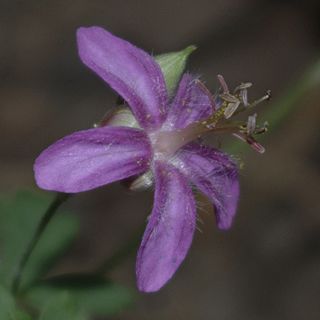Top Qs
Timeline
Chat
Perspective
Geranium caespitosum
Plant species in the geranium family From Wikipedia, the free encyclopedia
Remove ads
Geranium caespitosum, the purple cluster geranium or pineywoods geranium, is a perennial herb native to the western United States and northern Mexico. Its US distribution includes Arizona, Colorado, Nevada, New Mexico, Texas, Utah, and Wyoming.[3]
Wikimedia Commons has media related to Geranium caespitosum.
It has a purple to red flower with 5 stamens, and the sepals are acuminate, tapering with a long point. It has palmately lobed leaves. The fruit is a schizocarp made up of 5 mericarps. Flowers bloom May to September.[4] Geranium caespitosum has fleshy roots that penetrate deeply into the soil.[5] It grows in damp soils, as in the understory of coniferous forests and in canyons.
Remove ads
Uses
The Gosiute use the plant as an astringent and a decoction of the root to treat diarrhea. The Keres use roots crushed into a paste to treat sores, and the whole plant as turkey food.[6]
Cultivation
The pineywoods geranium is grown in xeriscape and native plant gardens for their well displayed pink flowers.[5]
Varieties
The four varieties may known by the following common names:
- G. c. var. caespitosum – pineywoods geranium
- G. c. var. eremophilum – purple cluster geranium
- G. c. var. fremontii – Fremont's geranium
- G. c. var. parryi – Parry's geranium
In the United States, all four varieties are found in Arizona and New Mexico, and the purple cluster geranium is only found there. The other varieties are all found in Colorado, Utah, and Wyoming, and the pineywoods variety extends into Nevada and Texas.[3]
Remove ads
Image gallery
- red individual
- lilac individual
- foliage
- var. fremontii
- var. fremontii
References
Wikiwand - on
Seamless Wikipedia browsing. On steroids.
Remove ads







